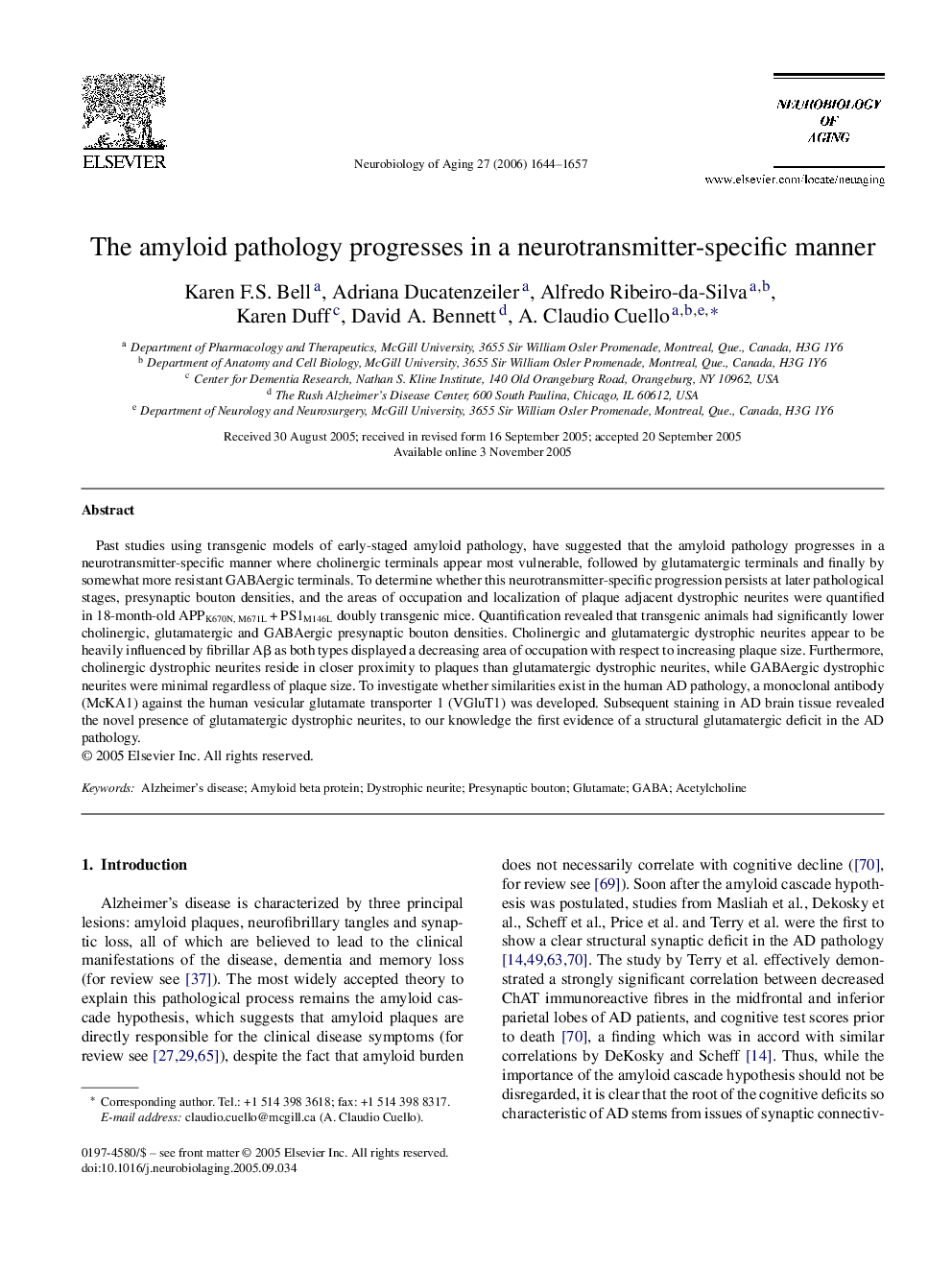| Article ID | Journal | Published Year | Pages | File Type |
|---|---|---|---|---|
| 328834 | Neurobiology of Aging | 2006 | 14 Pages |
Past studies using transgenic models of early-staged amyloid pathology, have suggested that the amyloid pathology progresses in a neurotransmitter-specific manner where cholinergic terminals appear most vulnerable, followed by glutamatergic terminals and finally by somewhat more resistant GABAergic terminals. To determine whether this neurotransmitter-specific progression persists at later pathological stages, presynaptic bouton densities, and the areas of occupation and localization of plaque adjacent dystrophic neurites were quantified in 18-month-old APPK670N, M671L + PS1M146L doubly transgenic mice. Quantification revealed that transgenic animals had significantly lower cholinergic, glutamatergic and GABAergic presynaptic bouton densities. Cholinergic and glutamatergic dystrophic neurites appear to be heavily influenced by fibrillar Aβ as both types displayed a decreasing area of occupation with respect to increasing plaque size. Furthermore, cholinergic dystrophic neurites reside in closer proximity to plaques than glutamatergic dystrophic neurites, while GABAergic dystrophic neurites were minimal regardless of plaque size. To investigate whether similarities exist in the human AD pathology, a monoclonal antibody (McKA1) against the human vesicular glutamate transporter 1 (VGluT1) was developed. Subsequent staining in AD brain tissue revealed the novel presence of glutamatergic dystrophic neurites, to our knowledge the first evidence of a structural glutamatergic deficit in the AD pathology.
